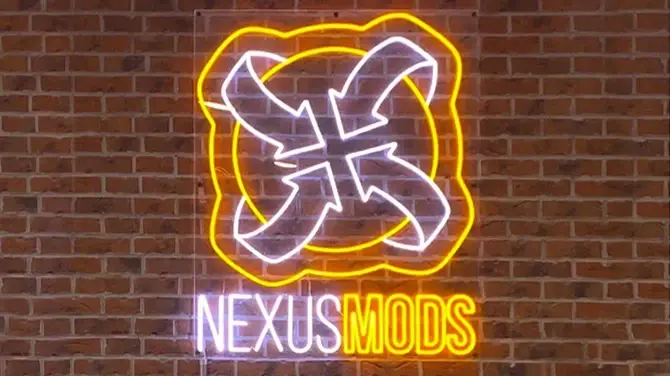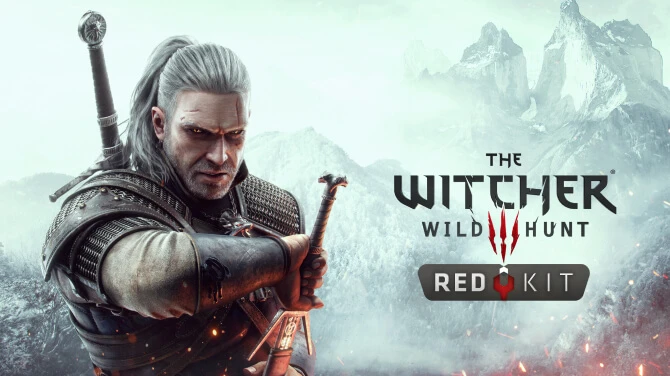The readme for SCIO has instructions for installing and uninstalling. Although my mods tend to be simple, with simple instructions, I realize that some of the steps are things that those new to using mods may not be sure how to do. This article gives more in-depth instructions for specific things, such as how to back up a save file, and explains how a few of the things in the game work. These instructions and explanations assume the default Skyrim controls and settings, a typical installation of the game, a Windows operating system, and a user with basic computer literacy. (Mac/Linux users may have different file paths and file management programs, but everything else should be the same.) This article also assume you are doing everything manually, rather than using tools like Nexus Mod Manager (NMM) or Load Order Optimisation Tool (LOOT). I personally don't use those programs, so you'll have to find help with them elsewhere.
I will be uploading a version of this article with each of my mods, with whatever instructions are relevant to that mod. If you have questions about a topic not covered here, or if you spot incorrect information, message me.
TABLE OF CONTENTS
- Skyrim's save system
- Finding your save folder and save files
- Backup saves
- Finding your data folder
- Console commands
- Refunding perks (and putting them back)
SKYRIM'S SAVE SYSTEM
There are three kinds of saves--quicksaves, autosaves, and proper (numbered) saves. Quicksaves are performed by pressing F5, and loading from your quicksave is done by pressing F9. You can only have one quicksave at a time, and it carries over between characters. When you go to load a save file in-game, the quicksave is named something like QUICK Solitude (if you quicksaved in Solitude).
Autosaves are done automatically by the game whenever you enter or exit cells (areas in the game). They are also done automatically every 15 minutes. Unlike quicksaves, a new autosave will not overwrite the old one. You can reduce the frequency of autosaves in the game settings or stop them altogether, but I suggest you keep the default settings, in case your character dies or your game crashes. That way, you won't lose more than 15 minutes of progress. When you go to load save files in-game, autosaves are named something like AUTO Solitude (if it autosaved in Solitude).
Manual, or "proper" saves, are performed by clicking Save in the game menu. They are also referred to as numbered saves, because when you go into the Load menu to choose a save to load, it will be named something like 042 Solitude (if you saved in Solitude). Numbered saves are stabler than quicksaves, and it's easier to find a specific numbered save than a specific autosave.
FINDING YOUR SAVE FOLDER AND SAVE FILES
You can find Skyrim's Save folder on your computer by going into your file management program (Windows Explorer, for Windows) and typing ".ess" (sans quotes) in the search bar. This will locate files with the Elder Scrolls Save extension, and tell you what folder they're in. On Windows 8/10, the path should be something like: C:\Users\Ivan\Documents\My Games\Skyrim Special Edition\Saves (if your name is Ivan). Make sure the Save folder's parent folder (folder it's inside) is Skyrim Special Edition, because older Elder Scrolls games also use the .ess file format--you don't want to mess with the wrong saves!
Your save files should be named something like: Save 42 - ILoveBalgruuf Solitude 08.23.52.ess (for a character named ILoveBalgruuf who saved in Solitude at 8:23 in the morning.)
BACKUP SAVES
Adding or removing mods mid-game (that is, on an established character) always has some risk. Some mods are fairly stable to add or remove mid-game, but ANY change to the load order (adding, removing, or even re-ordering mods) carries some risk of unintended or undesirable consequences, up to and including corruption of the save file, forcing you to start a new character or load an earlier save. In order to mitigate this risk, you need to make a backup save. That way, if something goes wrong, you don't have to start a game from scratch.
Step 1: Go in-game and save your game. Do a "proper" numbered save, not a quicksave or autosave. Make a note of the save number and exit the game.
Step 2: Go into your computer's Skyrim Special Edition save folder and find that save. Select the file and copy (don't cut).
Step 3: Paste the copy of the save file somewhere outside of your save folder. I recommend making another folder called Backups within the Skyrim Special Edition folder for this purpose, so you don't forget where the backup save is.
Step 4: In the same place you just pasted the save, create a document with your word processor of choice (I prefer Notepad for simple documents like this). Name it something like ILoveBalgruuf Modlist (for a character named ILoveBalgruuf). In this document, write down all of the mods you're running on that save, and what order they're loaded in. If you're forced to revert to this backup save, you'll need to run the same mods in the same order for it to work properly.
If something goes wrong, simply copy the backup save file and paste it back into your Save folder. Make sure to check the mod list document and re-install any mods that save relies on. Then, go in-game and load that save, and you're good to go.
FINDING YOUR DATA FOLDER
Mods are kept in your Data folder. To find it, go into your file management program (Windows Explorer, for Windows) and type "Skyrim.esm" (sans quotes) in the search bar. Make sure you look for the Elder Scrolls Master (.esm) file, NOT the Executable (.exe) file. Whatever folder has Skyrim.esm, is your Data folder for either Skyrim or Skyrim Special Edition--check the name of the folder to determine which is which. For Steam users on Windows 8/10, the path should be something like: C:\Program Files (x86)\Steam\steamapps\common\skyrim special edition\Data. This is where you need to put Elder Scrolls Plug-in (.esp) files and Bethesda Softworks Archive (.bsa) files, if any. Most mods have an .esp file telling the game what changes to make, and some have .bsa files (archives used to store graphics, scripts, and other custom assets some mods rely on).
Generally speaking, when installing mods, copy and paste the .esp and .bsa file (if any) into the Data folder. If mods have "loose files"--custom assets that aren't packed into a .bsa file--put them in the appropriate subfolders (Textures, Scripts, etc). If you aren't sure what you are doing with loose files, then consider letting a tool like Nexus Mod Manager handle it for you.
CONSOLE COMMANDS
Console commands are basically cheat codes--things you can enter in-game to do certain things. You can give yourself money or items, instantly kill an enemy, increase a skill, make yourself invulnerable to damage, and much more. I'm only going to list a few examples in this article--if you want to experiment more, you can look up codes elsewhere. Be warned that using console commands recklessly can break your game.
Step 1: Go in-game and press the tilde key (~) to bring up the console.
Step 2: Type in the desired command, and press Enter. For example, TGM will toggle God Mode on or off, making you invulnerable to damage and able to shout, sprint, and cast spells infinitely.
Step 3: Repeat step 2 as needed for additional commands. Note that time is frozen while you're in console, and effects won't always manifest until you exit.
Step 4: When you're done, press ~ again to exit the console.
Many console commands require either a BaseID or a RefID (Reference ID). Every item in the game has a BaseID. RefIDs refer to specific instances of those things. For example, a bottle of Honningbrew Mead has a Base ID of 508CA, but a SPECIFIC bottle of Honningbrew Mead (say, one sitting on a shelf) will have its own RefID, in case the game needs to refer to just that one bottle rather than every bottle. It's the same with NPCs, and many other objects in the world. The easiest way to find an object's RefID is to look at the object, enter the console, click on the object, and use the number that pops up.
If you need to look up something's Base ID, you can use the "help" console command. For example, if you wanted to find Lydia's Base ID, you would press ~, type: help Lydia, and then the game would spit out a list of things with Lydia in the name, and the Base ID for each. If you need to look up something that's more than one word, use quotes. For example: help "clothes iron". With all console commands, capitalization doesn't matter, but spelling does.
REFUNDING PERKS (AND PUTTING THEM BACK)
Some of my mods require you to remove certain perks, or all perks in certain skill trees, before you install them. There are three ways to do this--making a skill legendary, talking to Hermaeus Mora, and using console commands. The first two options will refund your perk points, so you can easily re-allocate them as you see fit, but perks removed with console commands have to be added back the same way.
Making a skill legendary:
Step 1: Raise the skill in question to 100.
Step 2: Scroll through the skills menu until you see the desired skill. (Don't scroll up into the tree, stay at the bottom where you can see the skill bar.)
Step 3: Press space bar. It will ask you, twice, if you want to make the skill legendary. Say yes both times.
Step 4: Any perk points placed into the tree will be refunded, and the skill will be lowered to 15.
Step 5: Later, you can put the perk points back into the tree as you level up the skill again, or invest the perks elsewhere if you wish.
Resetting through Hermaeus Mora:
Step 1: Travel to Solstheim, and complete the Dragonborn questline. (Specifically, the quest At the Summit of Apocrypha must be finished.)
Step 2: Make sure you have several dragon souls.
Step 3: While on Solstheim, read the Black Book called Waking Dreams, and you will be teleported to Apocrypha.
Step 4: Speak to Hermaeus Mora, and he will refund all perk points invested in the skill tree you specify. (He takes one dragon soul for each tree you reset.)
Step 5: Read the Black Book again to return to Solstheim.
Step 6: Later, you can put the perk points back into the tree, or invest the perks elsewhere if you wish.
Using console commands (recommended):
Step 1: Use the help console command to find the ID of the perk to be removed. For example: help "steel smithing".
Step 2: The console will give you the PerkID for Steel Smithing, which is CB40D.
Step 3: Use the remove perk console command: player.removeperk CB40D to remove Steel Smithing. If you're in the skills menu, you'll have to exit and re-enter before it displays properly. You WILL NOT get your perk point refunded, so remember which perks you've removed, and how many, so you can add them back later.
Step 4: Later, manually add your perks back, using the add perk console command: player.addperk CB40D to give you the Steel Smithing perk.
Note: Some guides online state that for perks with multiple ranks (such as Armsman), you must add or remove perks in the correct order. I personally have not had issues regardless of order, but I suggest looking up the codes online and following the specified order just in case. (The help command will not specify which rank of a perk is which, so look online and write the PerkIDs down.)
warning
We are aware of an issue with download statistics. See our status page for details.









0 comments